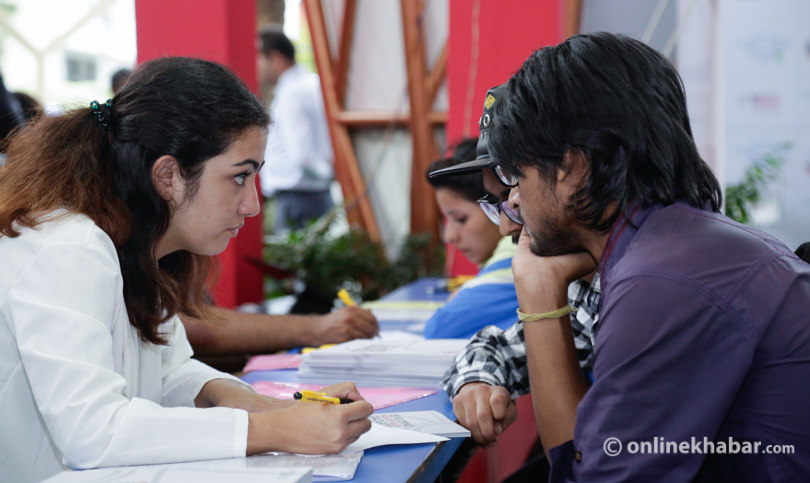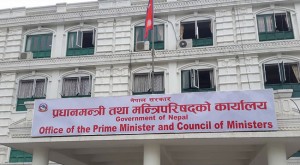
Nepal, a country nestled amidst the magnificent Himalayas, holds tremendous potential for growth and development across various sectors. However, to fully unleash this potential, it is imperative to address the persistent challenges that plague Nepal’s education system.
Recognising the pivotal role of education in shaping a nation’s future, Nepal must prioritise investments in quality education and undertake strategic reforms.
By focusing on improving educational infrastructure, enhancing teacher training programmes, developing relevant curricula, and ensuring equitable access to resources, Nepal can lay the foundation for a brighter and more prosperous future for its citizens.
The challenges
One of the most pressing challenges encountered by Nepal’s education system revolves around the issues of access and equity. Despite progress in recent years, disparities persist in various forms, including the rural-urban divide, along with gender and socioeconomic inequalities.
Numerous children residing in remote regions continue to face obstacles in obtaining a quality education, primarily due to insufficient infrastructure, a shortage of trained teachers, and limited resources. Overcoming these hurdles necessitates the concerted efforts of the government and relevant stakeholders to prioritise the reduction of the educational gap between urban and rural areas.
Essential measures include significant investment in infrastructure development to improve accessibility, the recruitment and training of qualified teachers to ensure high-quality education and the provision of necessary educational materials. By focusing on these critical aspects, Nepal can make significant strides towards achieving equitable access to education for all its citizens.
Need for urgent and substantial attention
Nepal’s education system requires urgent and substantial attention to ensure that students are prepared for the challenges of the 21st century. The prevalent reliance on rote learning and an exam-centric approach has limited the development of critical thinking, creativity and problem-solving skills among students.

It is crucial to shift towards a more student-centric and holistic learning approach that empowers learners to become active participants in their own education. To foster creativity and innovation, educational institutions must create an environment that values and nurtures students’ unique perspectives and ideas. By encouraging open-ended assignments, creative projects, and interdisciplinary learning, students can develop their creative thinking and innovation skills, enabling them to adapt to the rapidly evolving job market and contribute to society’s needs.
Another crucial need facing Nepal’s education system is the alignment of the curriculum with the demands of the 21st-century world. With the advancements in technology and globalisation, there is a growing need for an updated curriculum that reflects these changes.
Integrating digital literacy into the curriculum is essential as it equips students with the skills to navigate the digital landscape and utilise technology effectively. Additionally, fostering entrepreneurship skills prepares students to be innovative and adaptable in a rapidly evolving job market.
Moreover, incorporating environmental sustainability education creates awareness about environmental issues and encourages responsible practices. By revising and updating the curriculum to address these demands, Nepal’s education system can ensure that its students are well-prepared to succeed and contribute meaningfully in the modern world.
Investment for comprehensive education
Investing in the professional development of teachers is of utmost importance in order to enhance the quality of Nepal’s education system. Teacher training programmes should prioritise the promotion of modern teaching methodologies, pedagogical skills, and effective classroom management techniques.
By equipping teachers with up-to-date knowledge and skills, they will be better prepared to meet the evolving needs of students and create engaging learning environments. Continuous professional development programmes are essential to provide ongoing support and training for teachers throughout their careers.
These programmes can offer workshops, seminars and training sessions that address emerging educational trends and innovative teaching strategies. Additionally, mentorship programmes and peer support networks can play a vital role in nurturing teachers’ professional growth, providing them with guidance, feedback, and opportunities for collaboration and reflection.

Furthermore, leveraging technology can revolutionise education in Nepal. The Covid pandemic has showcased the potential of remote learning, and integrating technology into the education system can improve access, quality, and efficiency.
By implementing initiatives such as providing digital devices to students, creating online educational resources, and expanding e-learning platforms, Nepal can significantly improve access to education. Likewise, Nepal can enhance the quality of instruction and increase efficiency in the delivery of educational services.
These technological advancements can bridge the division existing in Nepal’s education system, especially for students in remote areas, and can lead to improved learning outcomes and greater opportunities for students across the country.
Need for collaboration
Collaboration among stakeholders is paramount in transforming Nepal’s education system. The government, educational institutions, civil society organisations and communities need to join forces to develop comprehensive education policies. These policies should address the needs of all students, ensure accountability and allocate sufficient resources for their effective implementation.
Engaging parents and communities in the education process is vital as it fosters a supportive environment, strengthens the bond between schools and families, and creates a sense of ownership in education.
By working together, these stakeholders can collectively contribute their expertise, resources, and perspectives to create a more inclusive, equitable, and high-quality education system that empowers students and prepares them for a successful future.
In conclusion, Nepal’s education system faces multifaceted challenges that require strategic and concerted efforts. By addressing issues of access, quality, relevance and equity, Nepal can unlock the full potential of its education system.

























